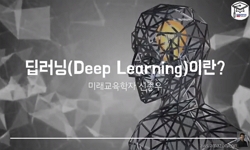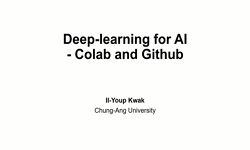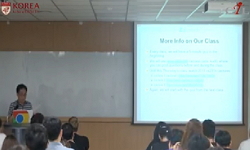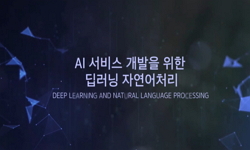분류 문제는 주어진 입력 데이터에 대해 해당 데이터의 클래스를 예측하는 문제로, 자주 쓰이는 방법 중의 하나는 주어진 데이터셋을 사용하여 기계학습 알고리즘을 학습시키는 것이다. 이...
http://chineseinput.net/에서 pinyin(병음)방식으로 중국어를 변환할 수 있습니다.
변환된 중국어를 복사하여 사용하시면 됩니다.
- 中文 을 입력하시려면 zhongwen을 입력하시고 space를누르시면됩니다.
- 北京 을 입력하시려면 beijing을 입력하시고 space를 누르시면 됩니다.

불균형 데이터 분류를 위한 딥러닝 기반 오버샘플링 기법 = A Deep Learning Based Over-Sampling Scheme for Imbalanced Data Classification
한글로보기https://www.riss.kr/link?id=A106302730
- 저자
- 발행기관
- 학술지명
- 권호사항
-
발행연도
2019
-
작성언어
Korean
-
주제어
불균형 데이터 ; CGAN ; 딥러닝 ; 오버샘플링 ; Imbalanced Data ; CGAN ; Deep Learning ; Over-Sampling
-
등재정보
KCI등재
-
자료형태
학술저널
-
수록면
311-316(6쪽)
-
KCI 피인용횟수
0
- DOI식별코드
- 제공처
-
0
상세조회 -
0
다운로드
부가정보
국문 초록 (Abstract)
분류 문제는 주어진 입력 데이터에 대해 해당 데이터의 클래스를 예측하는 문제로, 자주 쓰이는 방법 중의 하나는 주어진 데이터셋을 사용하여 기계학습 알고리즘을 학습시키는 것이다. 이런 경우 분류하고자 하는 클래스에 따른 데이터의 분포가 균일한 데이터셋이 이상적이지만, 불균형한 분포를 가지고 경우 제대로 분류하지 못하는 문제가 발생한다. 이러한 문제를 해결하기 위해 본 논문에서는 Conditional Generative Adversarial Networks(CGAN)을 활용하여 데이터 수의 균형을 맞추는 오버샘플링 기법을 제안한다. CGAN은 Generative Adversarial Networks(GAN)에서 파생된 생성 모델로, 데이터의 특징을 학습하여 실제 데이터와 유사한 데이터를 생성할 수 있다. 따라서 CGAN이 데이터 수가 적은 클래스의 데이터를 학습하고 생성함으로써 불균형한 클래스 비율을 맞추어 줄 수 있으며, 그에 따라 분류 성능을 높일 수 있다. 실제 수집된 데이터를 이용한 실험을 통해 CGAN을 활용한 오버샘플링 기법이 효과가 있음을 보이고 기존 오버샘플링 기법들과 비교하여 기존 기법들보다 우수함을 입증하였다.
다국어 초록 (Multilingual Abstract)
Classification problem is to predict the class to which an input data belongs. One of the most popular methods to do this is training a machine learning algorithm using the given dataset. In this case, the dataset should have a well-balanced class dis...
Classification problem is to predict the class to which an input data belongs. One of the most popular methods to do this is training a machine learning algorithm using the given dataset. In this case, the dataset should have a well-balanced class distribution for the best performance. However, when the dataset has an imbalanced class distribution, its classification performance could be very poor. To overcome this problem, we propose an over-sampling scheme that balances the number of data by using Conditional Generative Adversarial Networks (CGAN). CGAN is a generative model developed from Generative Adversarial Networks (GAN), which can learn data characteristics and generate data that is similar to real data. Therefore, CGAN can generate data of a class which has a small number of data so that the problem induced by imbalanced class distribution can be mitigated, and classification performance can be improved. Experiments using actual collected data show that the over-sampling technique using CGAN is effective and that it is superior to existing over-sampling techniques.
참고문헌 (Reference)
1 I. Tomek, "Two Modifications of CNN" 6 : 769-772, 1976
2 C. Cortes, "Support-vector networks" 20 (20): 273-297, 1995
3 N. V. Chawla, "SMOTE : synthetic minority oversampling technique" 16 : 321-357, 2002
4 V. Nair, "Rectified linear units improve restricted boltzmann machines" 807-814, 2010
5 G. W. Corder, "Nonparametric Statistics for Non-Statisticians: A Step-by-Step Approach" John Wiley & Sons 2014
6 S. S. Haykin, "Neural networks and learning machines, Vol. 3" Pearson 2009
7 "MineThatData"
8 G. Haixiang, "Learning from class-imbalanced data : Review of methods and applications" 73 : 220-239, 2017
9 I. Jolliffe, "International Encyclopedia of Statistical Science" Springer 1094-1096, 2011
10 I. J. Goodfellow, "Generative adversarial nets" 2672-2680, 2014
1 I. Tomek, "Two Modifications of CNN" 6 : 769-772, 1976
2 C. Cortes, "Support-vector networks" 20 (20): 273-297, 1995
3 N. V. Chawla, "SMOTE : synthetic minority oversampling technique" 16 : 321-357, 2002
4 V. Nair, "Rectified linear units improve restricted boltzmann machines" 807-814, 2010
5 G. W. Corder, "Nonparametric Statistics for Non-Statisticians: A Step-by-Step Approach" John Wiley & Sons 2014
6 S. S. Haykin, "Neural networks and learning machines, Vol. 3" Pearson 2009
7 "MineThatData"
8 G. Haixiang, "Learning from class-imbalanced data : Review of methods and applications" 73 : 220-239, 2017
9 I. Jolliffe, "International Encyclopedia of Statistical Science" Springer 1094-1096, 2011
10 I. J. Goodfellow, "Generative adversarial nets" 2672-2680, 2014
11 X. Y. Liu, "Exploratory undersampling for class-imbalance learning" 39 (39): 539-550, 2009
12 J. Van Hulse, "Experimental perspectives on learning from imbalanced data" 935-942, 2007
13 C. X. Ling, "Data mining for direct marketing:Problems and solutions" 73-79, 1998
14 S. J. Salvatore, "Cost-based modeling for fraud and intrusion detection : Results from the JAM project" 130-144, 2000
15 M. Mirza, "Conditional generative adversarial nets"
16 H. Y. Wang, "Combination Approach of SMOTE and Biased-SVM for Imbalanced Datasets" 228-231, 2008
17 A. Liaw, "Classification and regression by randomForest" 2 (2): 18-22, 2002
18 T. Jo, "Class Imbalances versus Small Disjuncts" 6 : 40-49, 2004
19 H. Han, "Borderline-SMOTE:a new over-sampling method in imbalanced data sets learning" 878-887, 2005
20 H. M. Nguyen, "Borderline Over-Sampling for Imbalanced Data Classification" 3 (3): 4-21, 2011
21 Y. Liu, "Boosting Prediction Accuracy on Imbalanced Datasets with SVM Ensembles" 107-118, 2006
22 C. H. Hoi, "Biased support vector machine for relevance feedback in image retrieval" 2004
23 D. L. Wilson, "Asymptotic Properties of Nearest Neighbor Rules Using Edited Data" 3 : 408-421, 1972
24 A. Dal Pozzolo, "Adaptive machine learning for credit card fraud detection" 2015
25 D. P. Kingma, "Adam: A method for stochastic optimization" 2014
26 H. He, "ADASYN: Adaptive synthetic sampling approach for imbalanced learning" 1322-1328, 2008
27 N. Macia, "A.Preliminary Approach in Synthetic Data Sets Generation based on Class Separability Measure" 1-4, 2008
28 R. O’Brien, "A random forests quantile classifier for class imbalanced data" 90 : 232-249, 2019
29 S. Moro, "A data-driven approach to predict the success of bank telemarketing" 62 : 22-31, 2014
30 G. E. Batista, "A Study of the Behavior of Several Methods for Balancing Machine Learning Training Data" 6 (6): 20-29, 2004
동일학술지(권/호) 다른 논문
-
Unit Root Test를 기반으로 한 장기 시계열 데이터의 Non-Stationary 발생에 따른 구조 변화 검정 및 시각화 연구
- 한국정보처리학회
- 유재성
- 2019
- KCI등재
-
모바일 환경에서의 지식기반 서비스제공을 위한 모바일 서비스 아키텍처 설계
- 한국정보처리학회
- 오지훈
- 2019
- KCI등재
-
무기체계 소프트웨어 신뢰성 시험 개선점 도출을 위한 소프트웨어 정적/동적 검증 분석 사례연구
- 한국정보처리학회
- 박지현
- 2019
- KCI등재
-
네트워크에서 루머 중심성 기반 질의를 통한 루머의 근원 추정
- 한국정보처리학회
- 최재영
- 2019
- KCI등재
분석정보
인용정보 인용지수 설명보기
학술지 이력
| 연월일 | 이력구분 | 이력상세 | 등재구분 |
|---|---|---|---|
| 2027 | 평가예정 | 재인증평가 신청대상 (재인증) | |
| 2021-01-01 | 평가 | 등재학술지 유지 (재인증) |  |
| 2018-01-01 | 평가 | 등재학술지 유지 (등재유지) |  |
| 2015-01-01 | 평가 | 등재학술지 유지 (계속평가) |  |
| 2012-10-31 | 학술지명변경 | 한글명 : 소프트웨어 및 데이터 공학 -> 정보처리학회논문지. 소프트웨어 및 데이터 공학 |  |
| 2012-10-10 | 학술지명변경 | 한글명 : 정보처리학회논문지B -> 소프트웨어 및 데이터 공학외국어명 : The KIPS Transactions : Part B -> KIPS Transactions on Software and Data Engineering |  |
| 2010-01-01 | 평가 | 등재학술지 유지 (등재유지) |  |
| 2008-01-01 | 평가 | 등재학술지 유지 (등재유지) |  |
| 2006-01-01 | 평가 | 등재학술지 유지 (등재유지) |  |
| 2003-01-01 | 평가 | 등재학술지 선정 (등재후보2차) |  |
| 2002-01-01 | 평가 | 등재후보 1차 PASS (등재후보1차) |  |
| 2000-07-01 | 평가 | 등재후보학술지 선정 (신규평가) |  |
학술지 인용정보
| 기준연도 | WOS-KCI 통합IF(2년) | KCIF(2년) | KCIF(3년) |
|---|---|---|---|
| 2016 | 0.35 | 0.35 | 0.28 |
| KCIF(4년) | KCIF(5년) | 중심성지수(3년) | 즉시성지수 |
| 0.23 | 0.19 | 0.511 | 0.06 |





 ScienceON
ScienceON KISS
KISS






